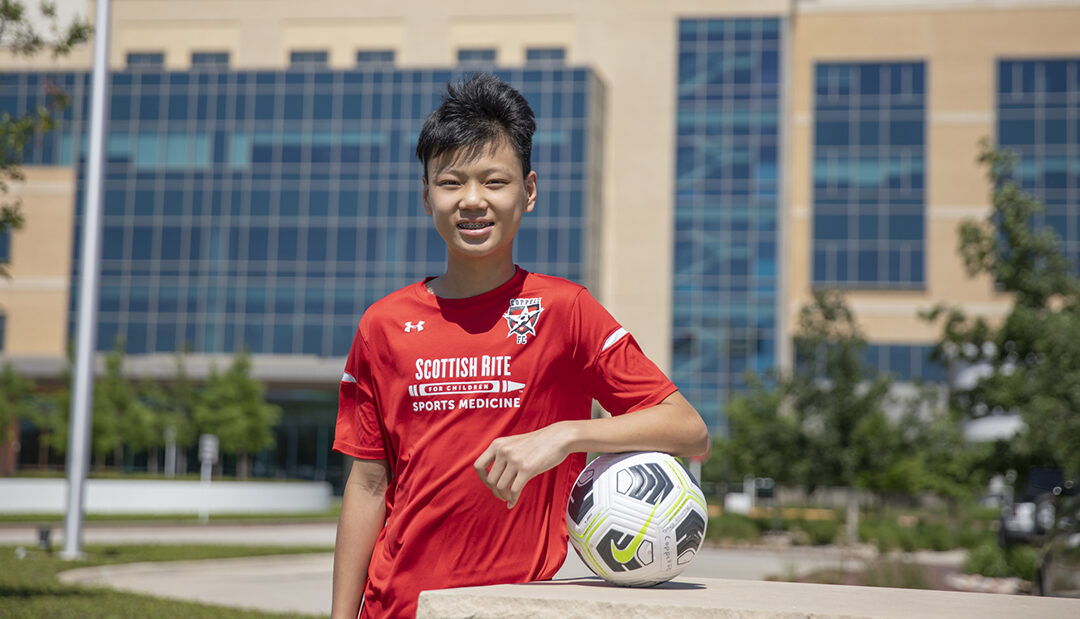
Healio Orthopedics Today: MPFL Reconstruction
Medical Director of Clinical Research Henry B. Ellis, M.D., recently discussed MPFL reconstruction for first-time patellar instability with Orthopedics Today.

Medical Director of Clinical Research Henry B. Ellis, M.D., recently discussed MPFL reconstruction for first-time patellar instability with Orthopedics Today.
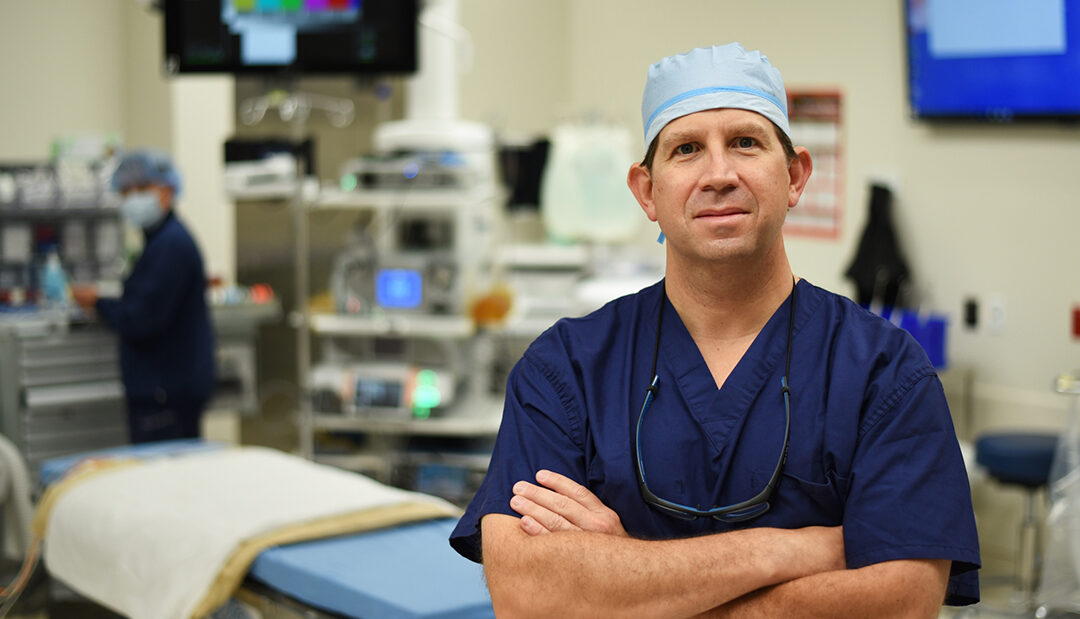
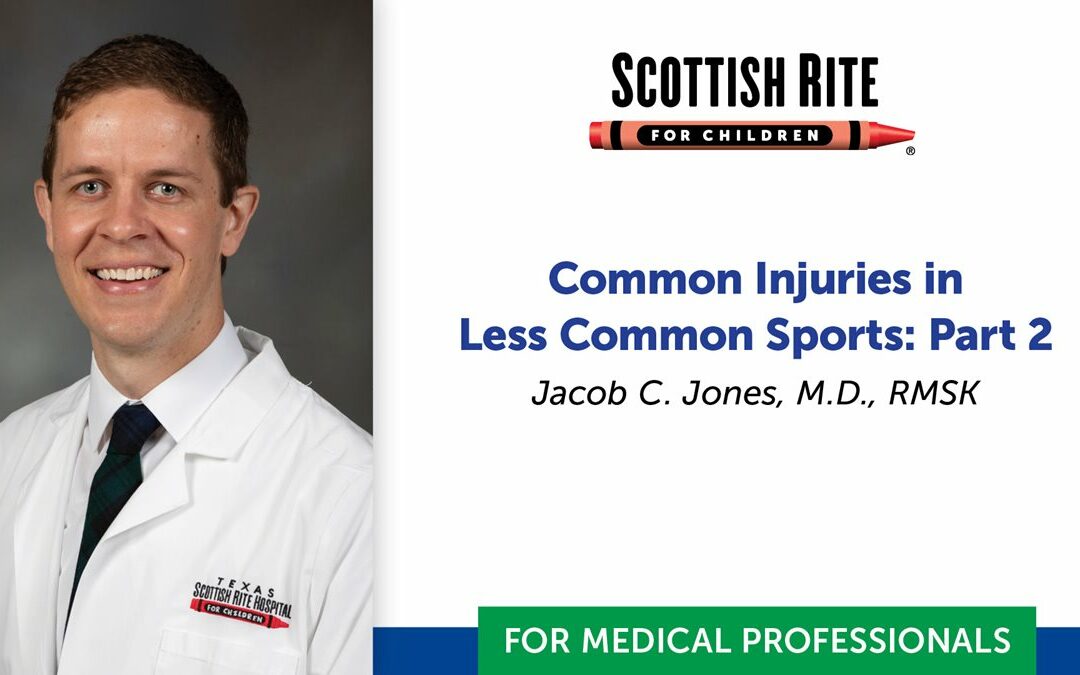
About two-thirds of kids who come to see us for sport-related injuries play at least one of these five popular sports: soccer, football, basketball, baseball and volleyball. However, young athletes sustain injuries in many other sports and activities.
The goal of the program is to inform health care professionals who work with young athletes about current concepts and the latest evidence on sport-specific injuries, providing care, returning to sports and preventing injuries. In part two of this program, Jacob C. Jones, M.D., RMSK, provided epidemiology, common injury patterns and recommendations for preventing injuries in softball, tennis, martial arts, rugby, fencing and track & field. This program was presented as a part of a monthly series for medical professionals called Coffee, Kids and Sports Medicine.
Pediatric sports medicine research has been supporting multisport athletes for various reasons including, but not limited to, the benefits that come from the varied skill development and training patterns and demands. Physical literacy is a term that describes how comfortable an individual is with various physical skills. With this in mind, we encourage kids and athletes to test out different sports and activities at varying levels of competitions. Injury risk can be managed in all activities, and knowing what injuries occur in which sports will help with that.
Softball
Softball injuries occur most commonly in the shoulder of pitchers. Much like baseball, repetitive motion, particularly on the growing joint and bones can cause an overuse injury. Because of the style of pitching, the adolescent elbow in softball is at a much lower risk of injury compared to baseball where the elbow accounts for half of injuries in pitchers. The mechanism of shoulder injury is also different in softball, and therefore, it is not diagnosed as Little Leaguer’s shoulder, which is commonly diagnosed in young baseball pitchers. Additionally, the softball pitcher experiences pain much earlier in the season, typically within the first six weeks. Other common injuries among high school softball players include ankle sprains and concussions.
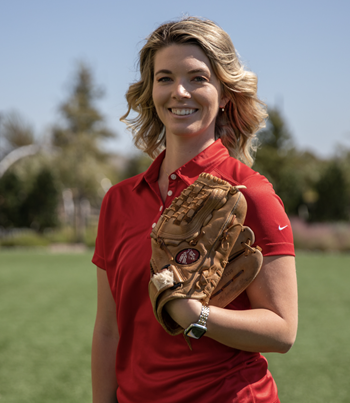
Advice from an Expert – Softball
Katie Holehouse, P.T., D.P.T., CSCS, played softball as a child and earned a scholarship to play at George Mason University. One of her first jobs was as an assistant softball coach in a high school. She has three tips to avoid softball overuse injuries.
Tennis
Tennis is a combination of quick movements and direction changes with the feet and repetitive, forceful movements with the arm(s). Since the game is not timed, fatigue also contributes to performance and injury risk in tennis.
Repetitive external rotation in shoulder and overextension in spine are the most common causes of injuries. The knee is another joint that is often injured in young tennis players. Joints like the elbow and knee in skeletally immature players will present with conditions that are very different from adults in this sport. For example, tennis elbow, a condition affecting the tendons around the elbow, is much less likely young tennis players than other conditions.
Advice from an Expert – Tennis
Orthopedic surgeon and avid tennis player, John E. Arvesen, M.D., is a three-time Texas High School State Champion and two-time Big 12 Champion at Baylor University. Arvesen offers these tips for preventing injuries in young tennis players:

Martial Arts
All of the different forms of martial arts help young athletes build strength, improve balance and increase flexibility. Additionally, they contribute to improvements in cognitive function, self-esteem, self-respect and self-awareness.
The varying styles contribute to differences in injury risk across the different forms. Some like tae kwon do and grappling may have a higher risk of contact injuries from engaging and striking with the hands, body and feet. In competitions, the head and pelvis are most frequently injured. Contusions and bloody noses are the most common injuries. Weapons may increase the risk of injuries. Meditative forms of martial arts, such as tai chi, have lower risk of contact injuries and offer safety in slow, controlled movement patterns.
Advice from the Experts – Nose Bleeds
Our athletic trainer team boasts more than 50 years of experience in sideline care of young athletes. Their top tip for managing epistaxis (a bloody nose) in martial arts and other sports is “Don’t tilt the head back!” This may lead to swallowing or vomiting of blood. Have gloves, gauze and Vaseline® on hand when the risk for this injury is high. Cutting tampons or purchasing commercially available cotton nose plugs help to slow the hemorrhage.
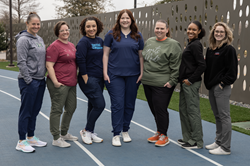
Rugby
Some sources suggest rugby is the ninth most popular sport in the world. The rules for youth differ from those of adults. Rugby injuries most commonly occur during a match with more than three-quarters of injuries occur during tackling. Proper tackling form is key to help avoid injury. Rugby injuries affect teenage girls most often. The style of play puts the head at the greatest risk of injury and football-like helmets are not used. The lack of protective equipment also contributes to joint and bone injuries, such as fractures, in the clavicles, hands and extremities.
Advice from an Expert – Head to the Hip
Fracture clinic nurse practitioner Ray Kleposki, M.S.N., CPNP, a former rugby player and currently a youth rugby coach, has 20 years of experience in the sport. His advice is to learn proper tackling form, which differs from football — head to the side hip. He advises that learning and following the rules prevents both injuries and penalties.

Rib injuries may not be common in youth sports, but the consequences of misdiagnosis and treatment can be high. Rib fractures are less common in kids compared to adults; however, kids with rib fractures have higher rates of hemothorax/pneumothorax, spleen and liver injury.
Rib injuries with these signs and symptoms warrant further medical evaluation:
Fencing
Fencing is a combat sport that is growing in popularity that involves sword fighting. With proper training and equipment, young athletes safely participate in fencing which has three different disciplines:
A competitive fencer typically focuses on one of these disciplines. Each discipline has different weapons, targets and rules. Saber athletes have the highest injury rate with injuries in the knee, thigh and ankle. Anecdotally this occurs more in the lead leg. Other injuries common to other sports may also occur including acute sprains and strains and chronic complaints in the leg are consistent with patellofemoral syndrome. Unique to fencing, puncture injuries are generally prevented with proper equipment.
Track & Field
The variety of events in track & field expose athletes to acute and chronic, or overuse, injuries. The array of injury patterns differs based on the demands of the event. Running, sprinting, jumping, throwing and combination of these requires each event to be considered separately when it comes to injury incidence and risk.
A recent study evaluated youth hurdlers and found the most commonly injured body parts were the ankle, knee and wrist. The injury types that most often cause a hurdler to present to an emergency department are fractures, joint sprains and contusions.
Learn more in an article “Age and Sex Comparisons in Pediatric Track and Field Hurdle Injuries Seen in Emergency Departments of the U.S. Sports,“ recently published in Sports, an international peer-reviewed journal. This article is a review of data from a registry called the National Electronic Injury Surveillance System. Dr. Jones and his peers in the Pediatric Research in Sports Medicine Society studied this information to describe a population that had not been done before. This kind of work helps providers in caring for and helping to prevent injuries in specific populations.
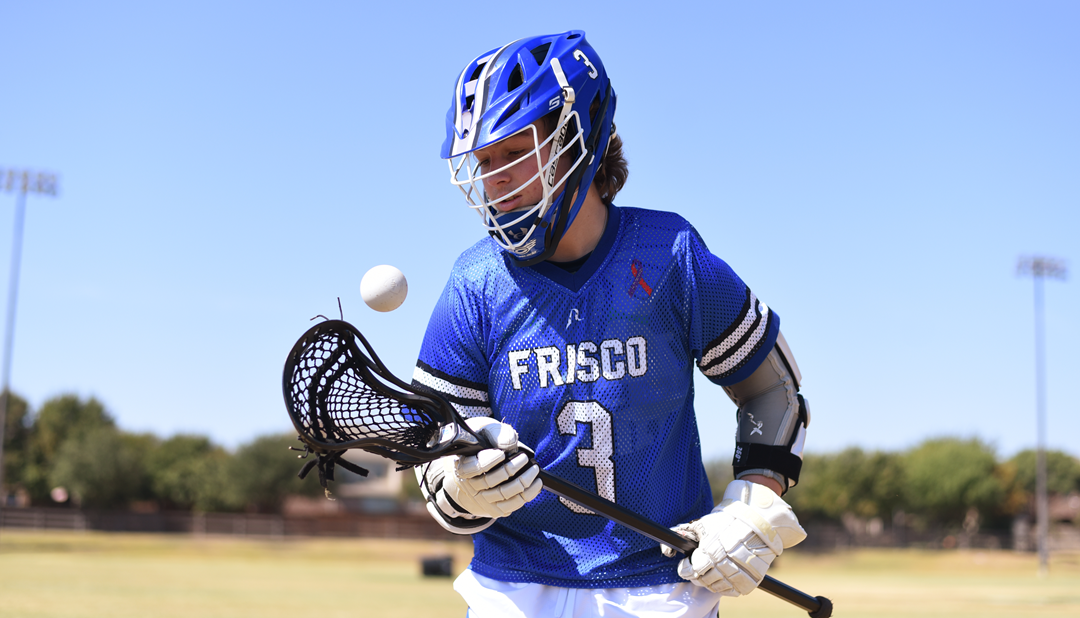
Lacrosse is one of the oldest sports in North America and is also one of the fastest growing sports in the United States. In 2021, there were more than 40,000 collegiate and more than 450,000 youth lacrosse players. Boys’ and girls’ lacrosse follow different rules and require different equipment, which may impact the types of injuries seen in these young athletes.
“Lacrosse is an intense and demanding sport,” orthopedic surgeon John E. Arvesen, M.D., says. “Athletes who are prepared can dramatically reduce the risk of injury.” Coaches and parents can use these tips to guide young athletes in the right direction.
Wear proper equipment. Protective gear that meets standards and fits correctly will provide the most benefit. Poor-fitting equipment may not offer the same protection or support.
Perform a dynamic warm-up. This involves continuous movement to raise the body’s core temperature in preparation for training or competition. Perform this before each practice or game to increase elasticity in the muscles, tendons and ligaments around the joints.
Learn and implement effective hydration strategies. Mild dehydration can worsen performance. Ideally, players should drink water every 15 to 20 minutes. Add a sports drink during intense activities lasting longer than one hour or in very hot environments to replace electrolytes lost through sweat.
Plan for rest and cross-training. Early sport specialization increases an athlete’s risk of injury and inhibits their athletic development. Focusing on one sport at an early age may lead to movement imbalances, an increased risk of injury and overtraining. A one- or two-month break between seasons and a day or two of rest each week in-season is recommended.
Some injuries in lacrosse are more difficult to prevent, such as those that occur from sticks, collisions and falls. Non-contact injuries are considered to be more preventable. As a sports physical therapist and youth lacrosse parent and coach, Michael Losito teaches young athletes the importance of learning fundamental movements to prepare their bodies for non-contact injuries. “When an athlete has control over the trunk and lower extremities, he or she can produce more power, which may help to protect the joints from minor and serious injuries,” Losito says.
Despite efforts to reduce the risk of injury, some accidents are going to happen. Make sure you recognize and respond to injuries promptly. Many conditions can be treated with rest and a short round of rehabilitation if they are recognized early.
SPORT-RELATED CONCUSSIONS
Concussions in girls’ lacrosse players are often the result of stick contact, or a blow with a stick to the head. Boys’ lacrosse has a higher risk for concussion due to player-to-player contact. An athlete with any concussion symptoms, including change in behavior, thinking or performance after a collision or a blow to the head, neck or body, should be removed from play immediately and not return to play the same day. A medical professional with experience managing concussions should determine when it is safe to return to play.
KNEE AND ANKLE INJURIES
Sudden changes in direction, stopping and jumping can place a lot of stress on the knee. This can stretch and tear ligaments, such as the anterior cruciate ligament (ACL) and medial collateral ligament (MCL). A swollen knee is a sign of a joint injury that needs to be evaluated.
In lacrosse, sudden direction changes, stepping on another player’s foot or landing from a jump can result in an ankle injury. Ankle sprains and injuries to the growth plate are common in growing athletes and should be evaluated to optimize treatment and return to sport.
BACK AND CHEST INJURIES
Player-to-player collisions or falls may cause back injuries. Powerful and repetitive rotation while running, cradling, shooting and passing is more likely to cause activity-related pain in lacrosse. Overuse injuries, such as stress fractures (spondylolysis), are also common in young athletes. Persistent back pain from overuse injuries needs to be evaluated by a medical professional. The equipment and high-speed movements in lacrosse increase the risk of a rare injury from a direct blow to the chest from the ball, a stick or player collisions. The condition, called commotio cordis, can be life-threatening. Chest protectors may reduce the impact and risk of this injury.
ARM INJURIES
The design of lacrosse protective gear allows the arm to move freely but leaves the shoulder open to injury. Clavicle (collar bone) fractures and ligament injuries, or “separated shoulders,” may occur. A change in the appearance of the shoulder, pain, swelling or limited motion after a collision or fall should be evaluated.
Body checks, stick checks and slashing may cause hand and wrist injuries. Soft tissue injuries such as ligament sprains may heal with rest and ice. Others may need a brace or other treatment.
Download the PDF.

A discoid meniscus is an abnormally shaped piece of cartilage found in the knee joint, and due to its shape, twisting knee movements can sometimes cause it to tear. When determining whether treatment for this injury is necessary, it is important to consider why, when and how the condition was discovered.
What is a meniscus?
The round end of the femur (thigh bone) sits on the flat top of the tibia (shin bone) to make up the knee joint. The femur is supported by the meniscus, which is composed of two soft “c” shaped cartilage structures. They act like soft cushions that help support the knee joint. The one that sits on the inner side is called the medial meniscus, and the one on the outer side is called the lateral meniscus.
What is a discoid meniscus?
Instead of having the typical “c” shape, a discoid meniscus forms as a solid piece, like a disc or a Frisbee®. The tissue grows thicker and larger than a normal meniscus and also has an abnormal texture, which makes it more likely to cause problems.
What causes a discoid meniscus?
A discoid meniscus is a congenital (at birth) defect and does not grow into the normal shape. This defect is not caused by trauma (i.e., an accident) or an injury. One to two out of every 100 children have a discoid meniscus. The condition is found more often in boys.
A discoid meniscus cannot be prevented. As the child grows, injuries and/or changes in the alignment of the hip, knee and ankle may cause symptoms.
What are the symptoms?
A discoid meniscus does not always cause symptoms. It may go unnoticed until symptoms begin. Symptoms can include pain, popping or snapping, limping, inability to bear weight (stand or walk) and inability to straighten the knee.
How is a discoid meniscus diagnosed?
A thorough history and physical examination are used to diagnose a discoid meniscus. Common findings on the outside of the knee (lateral joint line) include a bulge that can be seen or a “snap” that can be felt and heard.
X-rays are used to look at the alignment of the bones in the knee and leg. Other imaging, such as an MRI, may be used to look at the condition of the meniscus and other tissues in the knee.
What is the treatment?
For children who do not have symptoms or if they have a “clunk” when they move their knee, yet do not experience pain or difficulty conducting daily activities, no treatment is needed.
Early symptoms, such as swelling and pain, can be managed by resting, elevating the leg and other common strategies for knee injuries, such as ice and anti-inflammatory medications.
Surgical treatment is needed if there is a concern regarding the development of the knee with a large discoid or when symptoms begin to interrupt daily activities.
A knee arthroscopy, a type of minimally invasive surgery, may be recommended. The goal of surgery is to improve the shape of the meniscus and remove any loose or extra tissue that may cause the joint to become stuck. Rehabilitation and a slow return to sports may be necessary after surgery to change the shape of the meniscus.
A discoid meniscus increases the risk of a meniscal tear, and therefore, the condition is often found when evaluating an MRI of the knee after an injury. In these cases, treatment may be recommended to improve the shape of the meniscus. This can be done at the same time as surgery for other problems diagnosed in the knee.
What is the long-term outlook?
A discoid meniscus should not prevent normal daily activities or participation in sports. Diagnosis and management of symptoms can reduce the risk of further damage in the knee joint and prevent long-term problems. Regular follow-up to monitor the growth and health of the developing joint is very important after diagnosis, even if treatment is not needed in the early stages.
An important initiative of the Center for Excellence in Sports Medicine team at Scottish Rite for Children is a quality improvement registry designed to learn about the care and outcomes of treatment for discoid meniscus, among other conditions. This multi-center collection of data is led by pediatric orthopedic surgeon and director of clinical research Henry B. Ellis, M.D., is called the Sports Cohort Outcomes Registry (SCORE).
“This large collection of data allows us to compare surgery findings and outcomes across different age groups. The data set is unlike any other and will help to define care for this condition and many others. Early results were shared at the Pediatric Research in Sports Medicine annual meeting in 2022 and have already shaped more studies and better patient care.”
– Henry B. Ellis, M.D.
Each institution in the SCORE group may take care of a handful of patients with this condition each year. The compiled data, reviewing nearly 300 patients and their outcomes helps to provide better education to patient-families, improve surgical decision-making and setting better expectations for outcomes.
Differences in the appearance of the meniscus as well as the ability for the meniscus to be repaired were apparent. In younger patients, the meniscus:
These early findings help pediatric orthopedic surgeons know what to expect and how to counsel parents about who may or may not need surgery. Ultimately, the registry will be able to provide standard outcome expectations which will further improve the patient experience and outcomes.
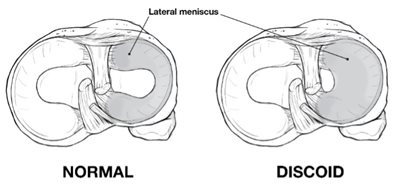
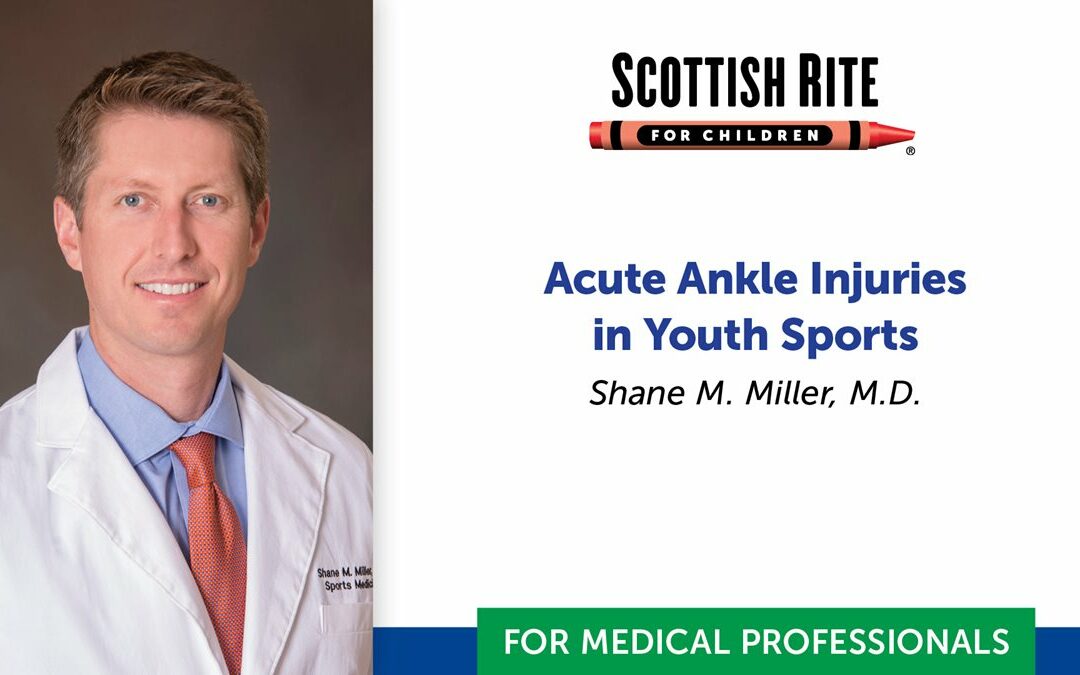
This is a summary of a program presented as part of a free, monthly education series at Scottish Rite for Children in Frisco, Texas.
Register for this and other on-demand programs or watch the presentation on our YouTube channel for Medical Professionals.
Download a PDF of this summary.
Shane M. Miller, M.D., discussed commonly encountered acute ankle injuries in a young athlete including considerations for safe return to play after an ankle injury.
Ankle injuries are unfortunately very common in young athletes, studies mentioned estimate:
Additional factors noted about the epidemiology of ankle injuries include:
When discussing the athlete’s history, elements to consider include variables beyond age, sex and sport. Knowing the position played, level of competition and history of previous injuries (same side, opposite side, knee, concussion, etc.) will help in understanding the conditions surrounding the injury. Understanding the long-term goals of the athlete and timing (pre-season, playoffs, etc.) helps to customize the treatment planning and anticipate the athlete’s response to the plan.
When assessing the history of the injury, ask:
Using a case-based approach, Miller covered common acute ankle injuries and approaches to evaluation and early management. He reviewed key elements of each case using these questions as a guide:
A strain is a muscle injury. A sprain is a ligamentous injury, and most, approximately 85%, are inversion injuries and involve the anterior tibial fibular ligament (ATFL) (lateral ankle sprain). Injuries to this and other ligaments are commonly associated with bruising, swelling, inability to bear weight and limited range of motion. These injuries also tend to have a high rate of recurrence or chronic instability.
With the presence of bony tenderness, inability to bear weight or significant swelling or bruising, anterior posterior (AP), lateral and mortise views are recommended. Ottawa ankle rules are helpful in determining if X-rays of the ankle are necessary in adults and children. Tenderness in other areas may indicate additional X-rays of the foot. Because an MRI is rarely needed, a specialty referral is indicated if considering an MRI for an ankle sprain. An MRI may be helpful to evaluate for some conditions like occult fractures or more significant injury, such as high ankle sprains or an osteochondral injury.
Early treatment of acute injuries of the ankle should include strategies that protect the ankle from further injury, reduce and prevent swelling and promote early mobilization. A familiar pneumonic, “RICE” has been modified to, “PRICEMMS” to include treatment beyond the early acute stage.
In general, young athletes with musculoskeletal and cervical spine injuries should not return to play until they have full range of motion, resolution of pain, normal strength, psychological readiness and the ability to demonstrate adequate sport-specific skills.
Return to play criteria should include:
After considering these items, individual circumstances should be assessed to identify risk of further injury and the need for protective bracing or additional time or treatment prior to returning. In some conditions, a referral to a pediatric sports or orthopedic provider may be advised, these include:
Physes, commonly referred to as growth plates, are composed primarily of cartilage cells so are more susceptible to both acute and overuse injury. The physis is the “weak link” in the chain and injuries in this area may lead to growth arrest or deformity.
Key terms to know:
Often a site of muscle/tendon attachment
Salter-Harris Fracture Classification
Studies reviewed in this presentation compared types of off-the-shelf ankle braces. Results suggest that braces may reduce the incidence but not reduce the severity of ankle, knee or other lower extremity injuries. Balance training was a finding in an article reviewing lateral ankle injury studies. Co-course director and program moderator, Henry B. Ellis, M.D., contributed to this review and provided comments in the Q and A session.